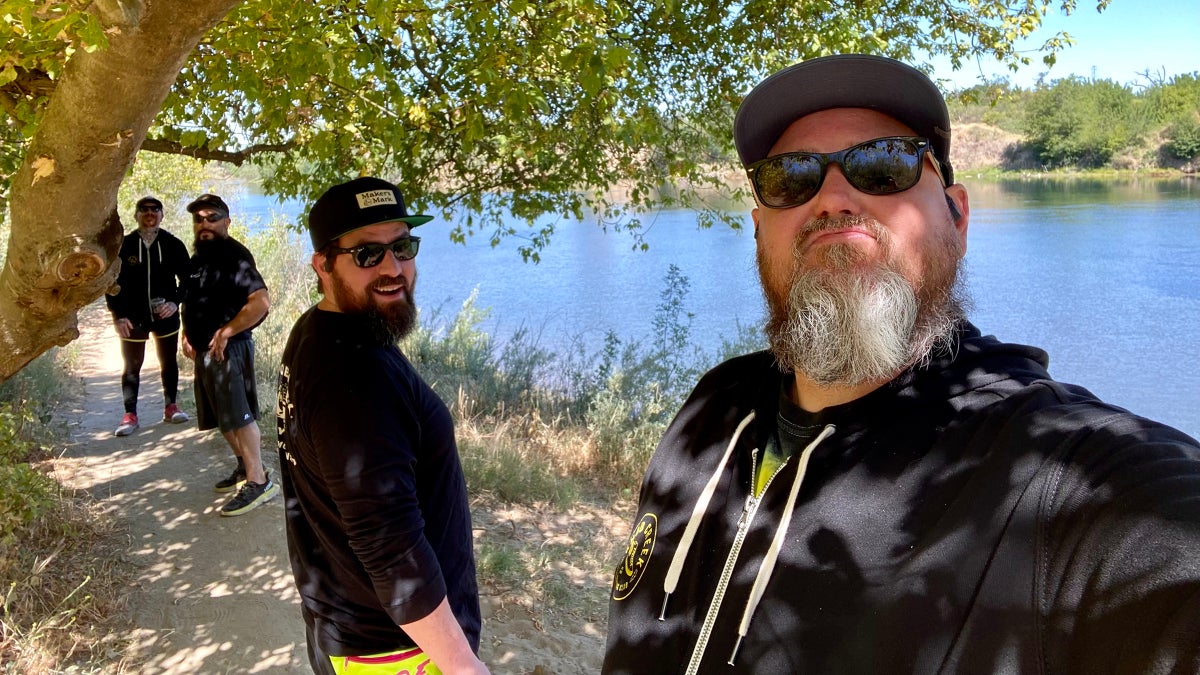Running? No Thanks. Jogging? I Can Do That.
7 min read

April Gallegos has under no circumstances been a runner and admits she likely by no means will be. “I loathe functioning,” states the 52-yr-outdated bartender and liquor distributor from California. Running, to Gallegos, indicates self-inflicted torture—stressful exercise routines, intense paces, and racing unfathomably extensive distances. Jogging, on the other hand, is something she’ll gladly do. She sees it as an deliberately sluggish, quick, and solely low-essential method to health.
Very last year, Gallegos embraced jogging a few or four situations a week, and worked up to a five-plus-mile run—er, jog. She states she lost body weight, felt improved about herself, liked the enterprise of a new jogging associate, and even entered a nearby 5K road race.

Gallegos wasn’t by itself. Previous March, 100 bartenders had been invited to be part of the Knob Creek Jogging Club, a company initiative aimed at aiding bar-service employees get fitter and come to feel far better for the duration of the pandemic. One particular of them was Elyse Kimmel, a school college student from Denver, who kick-began her physical fitness and rejuvenated her outlook on life by jogging a number of situations a week when she was unemployed for extra than 8 months. An additional, Sean Magee, a 38-year-previous from Philadelphia, overcame a long extend of bodily inactivity, bought into the shape of his life, misplaced 20 pounds, and now often goes jogging with his wife, pushing their young daughter in a stroller.
As improbable as a bartender’s jogging club could seem, the system was a large success—partially, members say, mainly because it wasn’t a rigid working program with pace-primarily based routines tied to schooling for an impending race.
In the early stages of growth, the club was supposed to concentrate on the transformative energy of consistent running. But organizers before long found out that the idea of working was a nonstarter for several, suggests Chris Heuisler, director of brand name expertise for the creative agency Brontosaurus.
Heuisler, a sub-a few-hour marathoner who the moment developed a working-concierge program for Westin Resorts, was employed to assistance produce and execute the application. “Initially they asked, ‘Can you be a working mentor for 100 bartenders?’” he suggests. He seemed at what Knob Creek was proposing and advised the company, “You’ve bought a genuinely amazing thought in this article, but I really do not know if you’re offering a functioning method so substantially as you are advertising hope.”
Heuisler and Nathan Laver, the agency’s founder and artistic director, realized the notion of joining a operating group could be polarizing, specifically for a population that typically finishes get the job done late at night time and might deficiency steady taking in, rest, and lifestyle behavior.
“My total mission in lifetime has been to get additional folks functioning and expertise the pleasure and optimistic affect it can have on your life,” Heuisler states. “But if I had been to inquire anyone who does not run, ‘Do you want to go for a run?’ I am met with two reactions—either, ‘No, managing sucks and I hate it’ or ‘No, I do not want to gradual you down.’”
For the duration of original testing with target teams, on the other hand, Heuisler learned that the term jogging didn’t carry any prescriptive connotations about intensity, functioning pace, or racing aims. Instead, it implied an simple, inclusive endeavor which is accessible to a huge range of contributors with a variety of body sorts and athletic abilities—perfect for the objective of acquiring members from the late-night time provider marketplace moving on a semi-frequent foundation and in any way it could suit into their way of life.
Jogging was a massive fad in the 1970s during the first recreational jogging boom, but the term inevitably turned a condescending pejorative inside of competitive, race-centric operating culture. Heuisler and Laver—who each worked as bartenders in their twenties—realized that reclaiming the idea as an irreverent, anti-jogging solution to health and fitness could aid with what they were being hoping to attain. “We collectively arrived to discover out that jogging was the Trojan horse into the program,” Heuisler states.
“The only purpose I was interested was because it was about jogging and not operating,” Gallegos suggests. “Jogging is not aggressive. Managing and runners can be intense. They say they want to go run ten miles… nah, not me, I’m out for that. But I’ll go jogging for a couple of miles.”
Reframing the exercise created an inclusive and welcoming vibe for people today who do not establish as runners, suggests Justin Ross, a Denver-centered scientific psychologist who specializes in human general performance. “The concept of a jogging club delivers relationship to other people who have related methods and worldviews as it relates to movement,” he suggests. “Jogging is not a filthy phrase. It is not a ‘lesser-than’ identification. It opens up the skill to take pleasure in movement devoid of a rigid will need to do points in a specific way.”
Of the initiative, Heuisler suggests, “There are no jogging law enforcement involved with how fast you’re likely. This was all about keeping everything in a constructive frame of thoughts. When you are down, it is easy to say, I’m not accomplishing ample, or I skipped two days final 7 days.”

For some, the program arrived just in the nick of time.
When the pandemic struck in 2020, the ensuing shutdown crushed the restaurant and bar field. Though some dining places rebounded a little with carryout food choices and outside seating, others—like Gallegos’s Mexican seafood restaurant—went out of small business. And simply because a lot of bars went temporarily darkish, a good deal of focused bartenders located on their own out of perform in the course of that time, way too.
“For such a social occupation, to place us all on the shelf like that for the far better element of a 12 months, it was tough, for certain,” claims Dan Brennan, a bar supervisor from Texas. “This was a good way for bartenders, who aren’t often the most physical exercise-mindful constituency, to relieve into some work out.”
“It felt like an chance for a new begin on the proper foot, with a chance of currently being balanced,” suggests Juliette Caputo, from Miami. “Chris built the method incredibly effectively for individuals like me who are not really lively and who are generally up all night. There was no strain. It was all about, ‘Just get out there and do no matter what you can, and we’re listed here to assist you.’”
In retaining with the laid-again, anti-institution vibe, the program set 9-kilometer (5.6-mile), 12-kilometer (7.4-mile), and 15-kilometer (9.3-mile) goal distances, to coincide with the 9-, 12-, and 15-calendar year-aged Knob Creek bourbon whiskeys—distances that also ensured no just one would request the joggers’ PRs. Participants had been sent retro-design and style jogging shorts, socks, wristbands, sunglasses, and a observe jacket. They also obtained a jogger’s handbook total of inspiring and supportive strategies that outlined 12 weeks of action, as properly as a 1970s-themed poster on which members could put a “Good Jog” sticker at the completion of every week.
“It seems silly, but it’s actually variety of humorous how stoked I was to place the sticker on the poster each individual 7 days,” Magee says. “As a 38-12 months-aged, I undoubtedly felt a little bit of teenage nostalgia for the accomplishment, variety of like when I was at soccer camp as a kid.”
Prior to the get started of the system, Heuisler had just one-on-a single chats with each of the participants to answer inquiries and present encouragement. The team was divided up into four regional teams—Hair of the Jog, Tender J, Joggernauts, and Jog It Like It is Hot—for the function of selling minimal-stakes enjoyment, camaraderie, and connections amid the bartenders.
Watch this publish on Instagram
Alongside the way, the joggers were delivered continual coaching from Heuisler and invited to motivational Zoom talks from Boston Marathon champion and acknowledged whiskey connoisseur Des Linden, nutritionist Erin Kenney, and seventh-generation Beam spouse and children distiller Freddie Noe, whose grandfather produced Knob Creek.
Primarily based on the enthusiastic suggestions and activities that the bartender joggers shared on Instagram and Strava, the application was a substantial accomplishment, suggests Robin Nance, senior supervisor at Beam Suntory. At its conclusion last July, 75 percent of the contributors achieved their distance intention. In point, the success had been so good that the Knob Creek Jogging Club will be revived this month, with 100 far more bartenders.
“Jogging actually aided me consider time for myself that was not stressful but basically anxiety relieving,” Kimmel suggests. “Joining that club was one of the greatest points I have performed for myself. It was existence shifting.”
The article Running? No Thanks. Jogging? I Can Do That. appeared very first on Outside On the web.






